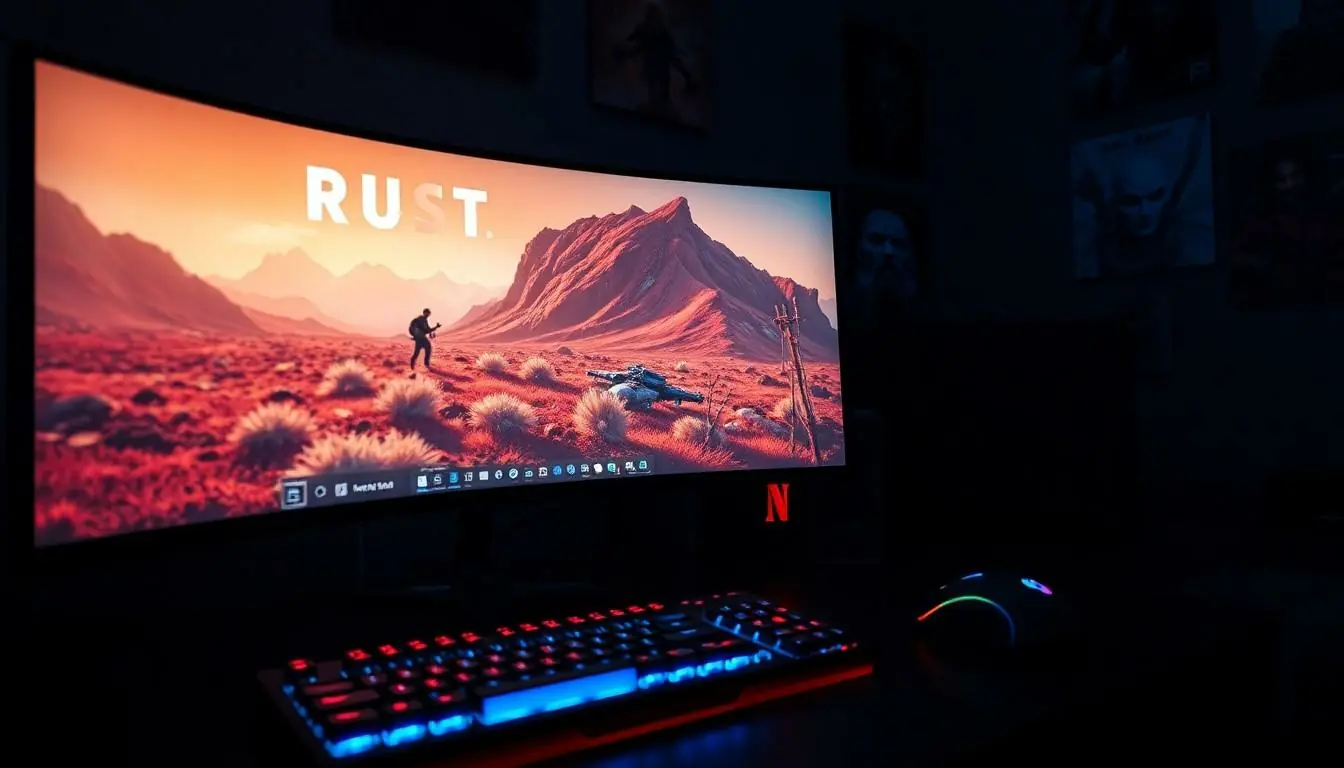Table of Contents
ToggleIn the wild world of survival games, Rust stands out like a well-cooked steak at a vegan barbecue. Players are drawn in by its adrenaline-pumping gameplay and the thrill of outsmarting opponents. But before diving headfirst into this chaotic adventure, there’s one burning question: how much space does this beast of a game actually need on your hard drive?
Overview of Rust Game Size
Rust requires adequate storage space for players to experience its engaging gameplay. The game size varies based on updates and expansions, so understanding system requirements is essential.
Minimum System Requirements
The minimum system requirements for Rust typically include a Windows 10 operating system, an Intel Core i7 processor, and 10 GB of RAM. Players need at least 30 GB of free disk space for installation. An NVIDIA GeForce 780 or equivalent graphics card is necessary for rendering the game’s visual elements. DirectX 12 is required to ensure optimal performance. Having a stable internet connection facilitates smooth gameplay in multiplayer settings.
Recommended System Requirements
For an enhanced gaming experience, recommended system requirements suggest using Windows 10 or later operating systems. A more powerful Intel Core i7-2700 or similar CPU is advised, along with 16 GB of RAM. Players should allocate 30 GB of free disk space for the game and updates. Utilizing an NVIDIA GeForce GTX 670 or better graphics card improves visual quality significantly. Ensuring compatibility with DirectX 12 helps maintain higher frame rates and superior graphics fidelity. A reliable internet connection remains crucial for seamless interactions during gameplay.
Factors Influencing Game Size
Several factors contribute to the game size of Rust, affecting how much storage players need.
Updates and Patches
Regular updates significantly impact game size. Each patch introduces new features and fixes bugs, adding extra files to the installation. Developers often enhance graphics or gameplay mechanics, necessitating additional space on hard drives. In recent years, Rust has received many updates, with some patches exceeding 10 GB. Players might notice their game size fluctuating frequently due to these updates. Understanding this process helps manage disk space effectively.
Assets and Content
Game assets and content play a crucial role in overall size. Rust features extensive environments, character models, and textures, all contributing to storage demands. New skins, items, and maps add depth to gameplay but also increase the game’s footprint. For example, the addition of a new map can range from 5 to 15 GB, depending on its complexity. Frequent content updates enrich the player experience while also expanding the game’s size footprint.
How Rust Game Size Compares to Other Games
Rust’s game size stands out when compared to similar titles in the survival genre. Storage requirements for its competitors, like Ark: Survival Evolved and DayZ, can range from 60 to over 100 GB, primarily due to extensive content and frequent updates. While Rust typically occupies around 30 GB at launch, it can expand significantly with each update.
Comparison with Popular Survival Games
Ark: Survival Evolved starts with a base size of approximately 60 GB, increasing with additional expansions. DayZ also weighs in at around 50 GB, driven by its multiplayer features. Both games demand substantial disk space due to complex graphics and numerous downloadable content packs. Rust’s combined gameplay elements and regular patches maintain a moderate size, keeping it accessible while still offering rich, engaging content.
Performance Impact of Game Size
Large game sizes can affect system performance and loading times. Games exceeding 100 GB often face longer load speeds, impacting player experience. In contrast, Rust balances content with size, ensuring quicker loads without sacrificing quality. Players on lower-spec PCs might notice smoother gameplay with Rust’s smaller footprint. Thus, developers aim for optimal performance through efficient file management, allowing players to enjoy gameplay without delays.
Storage Considerations for Players
Understanding storage needs enhances the overall gaming experience. Players should be aware of both installation size and the potential playable size of Rust.
Installation Size vs. Playable Size
Installation size measures the space taken up on a hard drive. Rust typically occupies 30 GB at launch, but updates can increase this figure. Playable size reflects the dynamic elements added throughout game development. Additional content, such as patches, can add an extra 10 GB or more, while new maps may require an additional 5 to 15 GB. Tracking these changes helps players manage both disk space and performance expectations.
Managing Storage Space
Players can optimize their storage by regularly checking game files. Deleting old files or uninstalling unused games can free up valuable space. Using external drives or cloud storage solutions also efficiently expands available storage. Cleaning up temporary files enhances performance and ensures that essential game files remain accessible. Players should also consider periodic backups, which can avert data loss while maintaining a tidy gaming environment.
Conclusion
Understanding Rust’s game size is crucial for players looking to optimize their gaming experience. With regular updates and expansions, storage requirements can fluctuate significantly. Staying informed about these changes helps players manage their disk space effectively.
By maintaining a clean storage environment and regularly checking for unnecessary files, gamers can ensure smoother gameplay and quicker load times. As Rust continues to evolve, being proactive about system requirements and storage management will enhance overall performance and enjoyment of this dynamic survival game.


